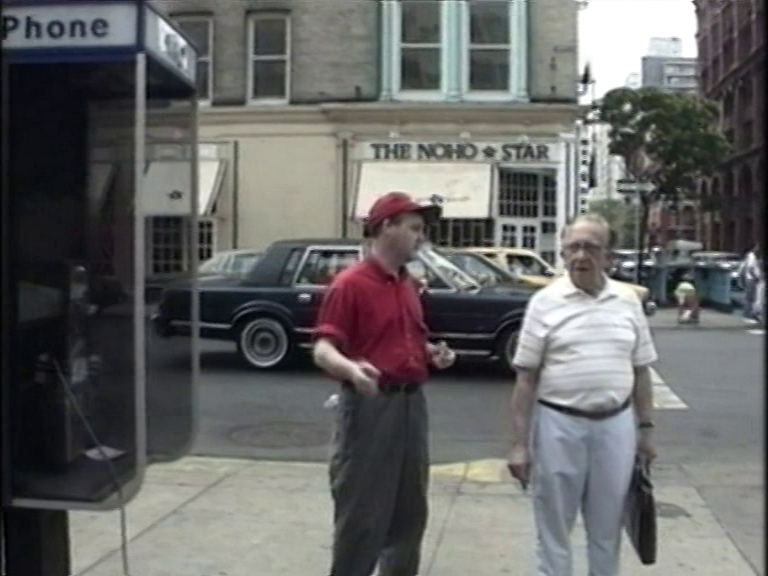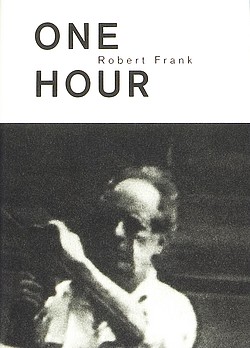This essay was written for That Magic Moment: 1968 Und Das Kino Eine Filmschau, a film program and publication organized by the Viennale and Stadtkino in late May and early June, 1998. Like some of the other pieces reproduced on this site as featured texts, this has various passages that have been recycled elsewhere in my work — in this case, both in the Chicago Reader and in my book Movie Wars — but it still seems worth reprinting, chiefly for its personal reflections on film history and, more generally, the 60s. — J.R.
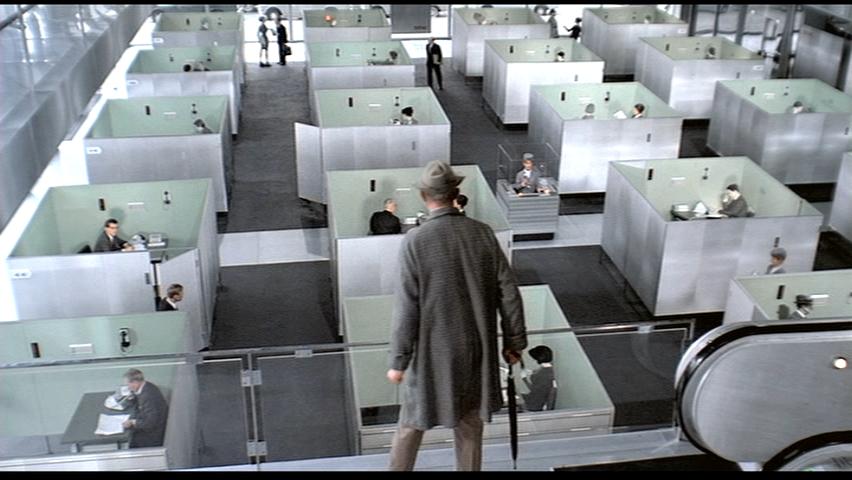
My Filmgoing in 1968: An Exploration
by Jonathan Rosenbaum
In 1968, the year I turned 25, I bought my first appointment book — or at least the first appointment book that I’ve bothered to save, and I’ve saved all 30 of the appointment books that I’ve bought and filled since then. For the most part, I use these appointment books to list appointments of various kinds: meetings with friends, planned trips to other cities and countries, classes I plan to teach or lectures I plan to attend or deliver. But most of the entries concern films I plan to see and when or where they’re playing. Read more
Read more
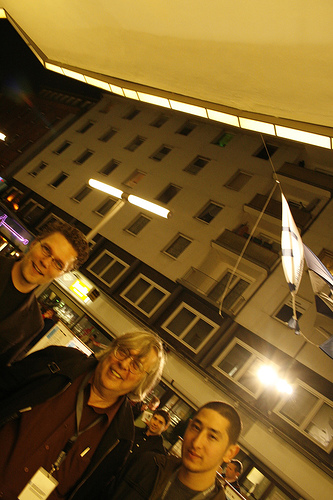
I no longer recall who snapped this deliberately lopsided photo of Oliver Baumgarten (left), Alexis Tioseco (right), and me in spring 2007, when the three of us were the entire FIPRESCI jury at the Oberhausen International Short Film Festival. Our prize that year went to an eye-popping masterpiece, Amit Dutta’s Kramasha (To Be Continued…), from India — which later became one of the five late (2007) entries to my list of all-time favorite films in the Afterword of the second edition of my collection Essential Cinema — and discovering that great film with Alexis was for me the absolute high point of the festival.
As some of you have heard by now, Alexis, who was 28, and his Slovenian partner Nika Bohinc, who was almost 30 and another very talented film critic, were murdered yesterday in their home in Quezon City, the Philippines, apparently by burglars. Nika, whom I also knew, but less well, had only recently moved there from Ljubljana, Slovenia; Gabe Klinger has just posted a very tender and affectionate piece about both of them a few hours ago. And for the moment, at least, one can still access Alexis’ excellent web site, Criticine. (Postscript, 9/3/09: Adrian Martin writes from Melbourne that Nika’s own Ekran blog, also [mostly] in English, which I haven’t encountered until now, “with many fine pieces, is still also accessible”.) Read more

1. Taking a British Airways morning flight from Edinburgh to London this morning, I was delighted to discover that a tourist-class seat entitles me to a full hot British/Scottish breakfast — omelet, sausages, ham, mushrooms, and potatoes, with coffee served in an old-fashioned ceramic cup, at no extra charge. Simply imagining such a thing on any domestic flight in the U.S. nowadays would be indulging in a decadent form of nostalgia.
2. The intelligence, wit, and sharp writing one almost takes for granted in portions of the weekly press here. After bemoaning the phony “knowing” tone of David Thomson pretending to be authoritative about Orson Welles’ life at the time of his death in my last Notes entry, it’s worth quoting from three pieces that I happened to read during my 90-minute flight, all displaying good thoughts as well as good prose. The fact that I happened to just see Fantastic Mr. Fox two nights ago, in the Scottish coastal village St. Andrews, made the latter two pieces, both reviews of the film, especially interesting:
a. From “Your Call is Not Important To Us” by Will Self (New Statesman, 26 October) on mobile phones: “As defined by the psychiatric profession, psychosis is a blanket term for inadequate reality-testing (an ugly coinage, but you know what I mean). Read more
This was written in early 2003 for Trafic no. 46, their summer issue, where it was translated into French by Jean-Luc Mengus, their managing editor. It’s part of a very wide range of “letters” from cities around the world that they’ve been running for many years. It’s very sad to report that Alexis A. Tioseco, whom I’d recommended to the magazine as the perfect person to write their “Letter from Manila,” was in the middle of fulfilling that assignment when he was murdered. — J.R.
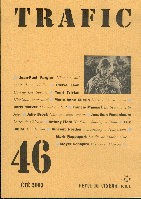
Letter from Chicago

Dear Trafic,
Approaching my 60th birthday and the sort of self-definition that stems in part from the various places I’ve lived, I’ve recently noted that I’ve been anchored in the same place for roughly the first quarter of my life (Florence, Alabama) as well as the past quarter (Chicago). Yet it seems equally significant that two-thirds of the remaining half of my life have been spent in New York, Paris, and London, where the world is measured and perceived quite differently from the ways it’s encountered in either Florence or Chicago. This includes the world of cinema, which has figured for me as a distinctly separate entity when viewed from the separate vantage points of these five localities. Read more
This synopsis and review appeared in the December 1975 issue of Monthly Film Bulletin.
I’ve only just begun to familiarize myself with Moana with sound (see first still below), put together by the Flahertys’ daughter Monica, restored by Bruce Posner and Sami van Ingen (the Flaherty’s great-grandson), and posthumously released on Blu-Ray today by Kino Lorber. But I’ve already sampled enough of it — as well as all of Posner’s “short” (39-minute) history of the project, included along with other extras on the Blu-Ray — to view it as a major achievement, hopefully leading to a major reassessment of what I regard in some ways as Flaherty’s most neglected masterpiece. — J.R.
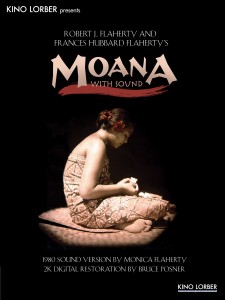

Moana
U.S.A., 1925
Directors: Robert J. Flaherty, Frances Hubbard Flaherty
Savai’i, a Samoan island. Near the village of Safune, Moana pulls taro root from the ground and peels it while his betrothed Fa’angase bundles leaves, his mother Tu’ungaita carries mulberry sticks and his younger brother Pe’a helps them. Setting off for the village, they set a trap for wild boar, the forest’s only dangerous animal, which they subsequently capture. Moana, Fa’angase, and Pe’a go spear-fishing, along with Moana’s older brother Leupenga. Back in the village, Tu’ungaita makes back-cloth for a lavalava, a native dress. Read more
Written for the 120th and final issue of Trafic, Fall 2021, where it appears in Jean-Luc Megus’ French translation. Contributors to this special issue were invited to write about something treasured, bearing in mind the quote from Ezra Pound that’s cited. — J.R.
“I never know how I should end my solos,” John Coltrane reportedly once said to Miles Davis, to which his boss gruffly replied: “Try taking your horn out of your mouth.”
Coltrane’s conceptual orientation versus Davis’s blunt practicality can be felt in the former’s symmetrical, multi-note flurries and rude honks up and down scales, furiously covering almost every available silence with his “sheets of sound”, and the latter’s jagged, elliptical smears and little-boy cries separated by sudden pauses that often register like either interruptions or abrupt afterthoughts, second-guessing himself.
An almost sexual alternation of giving and withholding in a jazz solo becomes a tug of war between conflicting formal as well as sexual impulses — Davis’s version of coitus interruptus versus Coltrane’s giddy flirtations and unresolved foreplay. It persists throughout director Fei Mu’s and screenwriter Li Tianji’s extraordinary Spring in a Small Town (1948), a troubled and troubling piece of cinematic chamber music that seems all the more passionate yet intensely bottled up during the romantic and sexual frustrations of the Coronavirus pandemic. Read more
This appeared in the May 21, 1993 issue of the Chicago Reader. Although the YouTube link given below no longer works, I can happily report that it’s out now on DVD. — J.R.
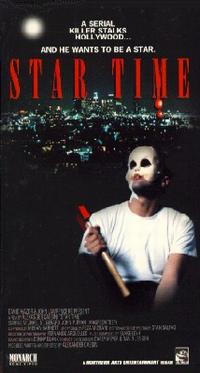
STAR TIME
*** (A must-see)
Directed and written by Alexander Cassini
With Michael St. Gerard, John P. Ryan, Maureen Teefy, and Thomas Newman.
I doubt that any current media buzz term is more ideologically polluted than “family values.” Even its alternative, “suitable for the whole family,” doesn’t contain the same puritanical lies. The egregious false assumptions built into this phrase as it’s now used are breathtaking: that families are all alike when it comes to their values; that these shared values are somehow independent of — and therefore free of — the sex and violence purveyed by Hollywood movies (“sex and violence” invariably viewed as an irreducible entity that also mysteriously includes profanity); and that, because they eschew sex and violence, “family values” are uniformly good and healthy. These assumptions seem predicated on the notion that everything bad that happens in society necessarily occurs outside the home, on the streets. Never mind that statistics show that an inordinate amount of lethal violence occurs during national holidays, in homes, between family members; this is factored out of the discussion along with the inconvenient fact that babies (and therefore families) are generated by sex, not storks. Read more
Written for The Unquiet American: Transgressive Comedies from the U.S., a catalogue/collection put together to accompany a film series at the Austrian Filmmuseum and the Viennale in Autumn 2009. — J.R.

Jerry Lewis’s opulent second feature as a director
(1961), in some ways his most ambitious (and his first
in color), is also the one that has the most to say
about his character’s sexual hysteria, intensified once
the hero discovers that he’s been hired to work as
houseboy in a boarding house full of sexy young aspiring
actresses -– all of whom are initially seen simultaneously
in their separate rooms as part of a single gigantic
dollhouse set occupying two soundstages at
Paramount. (To keep track of both this set and his
own performance, Lewis invented the video assist, a
filmmaking technique used in Hollywood filmmaking
ever since.) Furthermore, Lewis’s talent for freeform
psychic fantasy, which clearly distinguishes his
work from the social satire and narrative motivations
of Frank Tashlin, reaches a kind of apogee here when
he encounters a Bat Lady (shades of Artists and
Models) lurking inside a “forbidden” room, along
with the Harry James Orchestra. And his character is
no less free to dance with George Raft (playing himself)
in another sequence. Read more
This originally appeared in the May 23, 1997 issue of the Chicago Reader. –J.R.
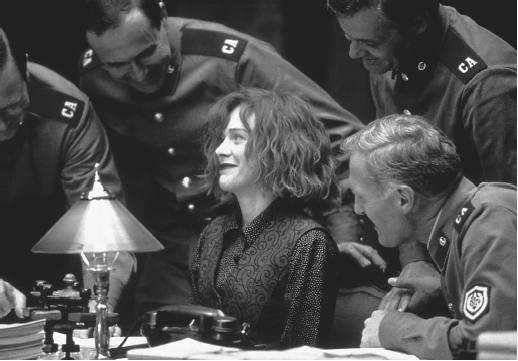
Children of the Revolution
Rating *** A must see
Directed and written by Peter Duncan
With Judy Davis, Sam Neill, F. Murray Abraham, Richard Roxburgh, Rachel Griffiths, Geoffrey Rush, Russell Kiefel, John Gaden, Ben McIvor, Marshall Napier, Ken Radley, Fiona Press, and Alex Menglet.
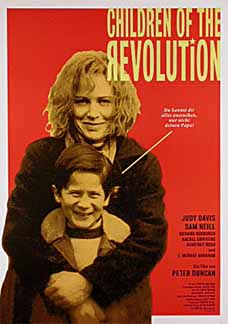
This cockeyed story is recounted by several narrators in pseudodocumentary style (a style distantly patterned on Warren Beatty’s in Reds): various old codgers in present-day Australia speak to the camera about the past, their accounts leading into several extended flashbacks. Judy Davis plays Joan Fraser, a red-diaper baby who learned about Karl Marx from her father when he took her fishing. In 1949 — during the darkest days of the cold war — she’s a young woman who still dreams of a workers’ revolution and still idolizes Joseph Stalin. When Prime Minister Robert Gordon Menzies decides that Australia should follow the U.S. into Korea and outlaw communism and sign various anticommunist treaties, Fraser goes ballistic: she gets herself and her boyfriend, Welch (Shine’s Geoffrey Rush), ejected from a movie theater by causing a commotion during a newsreel, decides it would be OK to go to prison (“What do you people want — a discreet revolution?”), Read more
From the November 20, 1992 Chicago Reader. –J.R.
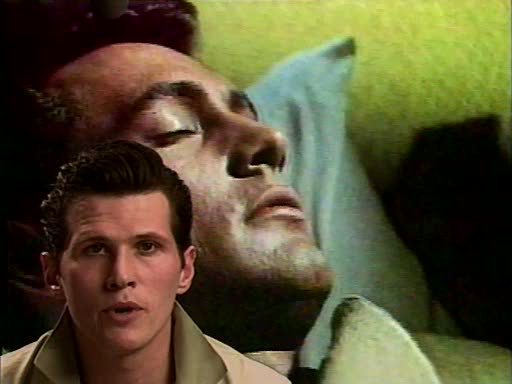
ROCK HUDSON’S HOME MOVIES
**** (Masterpiece)
Directed and written by Mark Rappaport
With Rock Hudson and Eric Farr.
In the creation of art, the verb is there to authenticate the subject with the same name.
To paint is the act of painting. . . . To write becomes the act of writing and of the writer. To film, that is, to record a sight and project it, is the act of cinema and of the makers of films . . .
Only television has no creative act or verb to authenticate it. That’s because the act of television both falls short of communication and goes beyond it. It doesn’t create any goods, in fact, what is worse, it distributes them without their ever having been created. To program is the only verb of television. That implies suffering rather than release. — Jean-Luc Godard
You were a great star, Mr. Hudson — one of the biggest. Sorry it all had to end like this. — director Mark Rappaport’s voice in Rock Hudson’s Home Movies
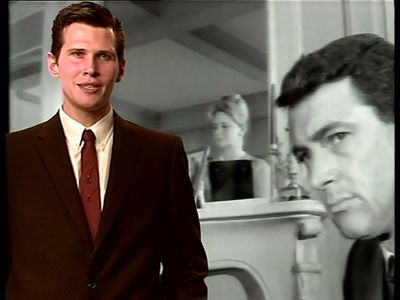
The precipitous decline in the quality of American movies since the 1970s can be attributed to several factors, but three interconnected changes in U.S. Read more
This article appeared in the October 9, 1987 issue of the Chicago Reader, and one good reason for reviving it now is to point up how out of date some of its remarks about Feuillade’s invisibility have become almost 37 years later. Back then, I noted, there was only one book about Feuillade; today I have seven more (all in French) of diverse sizes and scopes, and I’m sure my collection is far from exhaustive. Two full serials, Les vampires (1915) and Judex (1916), are available in the U.S., as is an excellent restoration of the multichaptered Fantômas (1913-1914) on Blu-Ray, so I’m still hoping that Tih Minh (1918), still my favorite, not to mention Barrabas (1919) and even La nouvelle mission de Judex — a 1917 crime serial I’ve never seen which is reputed to be inferior to the others — will also surface eventually. (2021 postscript: I’m about to order Tih Minh from French Amazon.) Also, Kino International has released Gaumont Treasures1897-1913, with one of its three discs devoted to Feuillade short films made between 1907 and 1913, as well as a documentary “featurette” about him. — J.R.
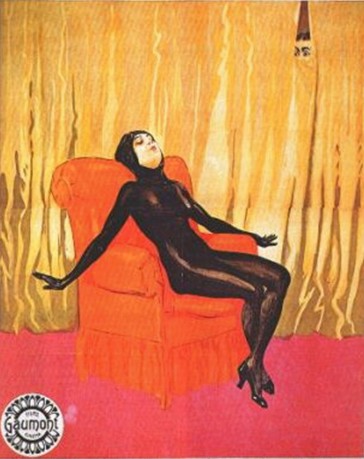
LES VAMPIRES
**** (Masterpiece)
Directed and written by Louis Feuillade
With Musidora, Édouard Mathé, Marcel Lévesque, Jean Aymé, Delphine Renot, Stacia Napierkowska, Fernand Hermann, Renée Carl, Louis Leubas, Louise Lagrange, Moriss, and Bout de Zan. Read more
From Slate (posted June 23, 2009). — J.R.
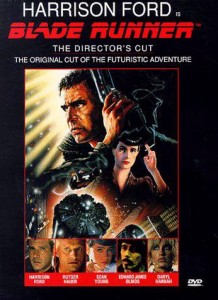
One of the key paradoxes of contemporary movie culture is that some film lovers claim that cinema is dying, others maintain that it’s entering a renaissance, and both factions are right. It all depends on whose movie culture you’re talking about.
The problem is how elastic and imprecise our terminology has become. Nowadays, when somebody says, “I’ve just seen a movie,” we don’t necessarily know whether the speaker saw it in a theater or on a mobile phone, alone or with a thousand other people, on celluloid or on a disc. These aren’t really the same experiences, even if we choose to call them all The Godfather or Up. And when it comes to distinguishing between film history and advertising, we may be even more confused.
One reason why we may be entering a renaissance in film viewing is that we no longer have to go to Paris or New York in order to learn anything comprehensive about the history of the medium as an art form. We can, in fact, live almost anywhere, at least if we own a multiregional DVD player — and nowadays one can acquire one of these for less than $50. Read more
From the Chicago Reader (October 27, 2000). — J.R.
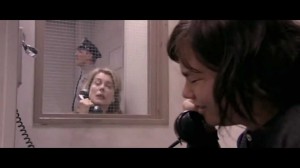
Dancer in the Dark
**
Directed and written by Lars von Trier With Bjork, Catherine Deneuve, David Morse, Peter Stormare, Joel Grey, and Jean-Marc Barr.
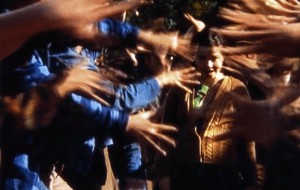
To put it in the singsongy fashion of its own tacky musical numbers, Lars von Trier’s Dancer in the Dark enrages as well as engages, but I must confess that it also fascinates with its capacity to elicit extreme reactions. Ever since this musical about a woman from communist Czechoslovakia working in an American factory won the Palme d’Or and best actress prize (for rock star Bjork) from a Cannes jury headed by Luc Besson — one of the only Europudding directors who’s both crass and clever enough to rival von Trier as the most shameless sensationalist around — it has provoked hysterical reactions, pro as well as con. Viewers are struck by its technology (it was allegedly shot with 100 stationary digital cameras) as well as its aesthetics, its setting and social aspects, and its melodramatic story, not to mention its musical numbers. Though the movie certainly has its American defenders, many of its most vociferous detractors come from this country too. It’s not too surprising considering that this movie offers a horrific view of the American justice system, one you’d expect to find in an east European propaganda film shot 40 or 50 years ago. Read more
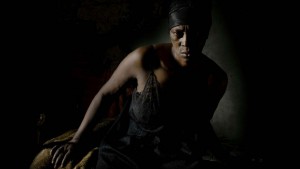
1. Vitalina Varela (Pedro Costa)
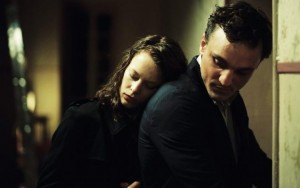
2. Transit (Christian Petzold)
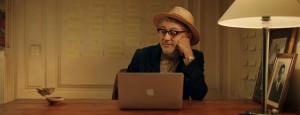
3. It Must Be Heaven (Elia Suleiman)
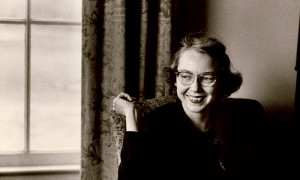
4. Flannery (Elizabeth Coffman and Mark Bosco)
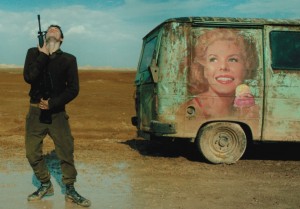
5. Foxtrot (Samuel Maoz)
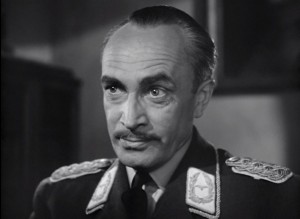
6. Conrad Veidt—My Life (Mark Rappaport)

7. Where’s My Roy Cohn? (Matt Tyrnauer)
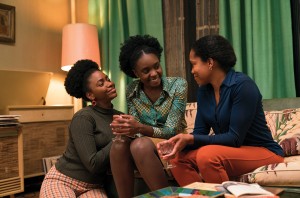
8. If Beale Street Could Talk (Barry Jenkins)

9. Ad Astra (James Gray)
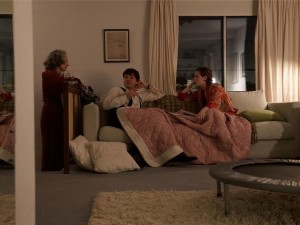
10. Souvenir (Joanna Hogg)
Read more


